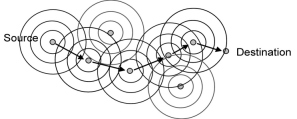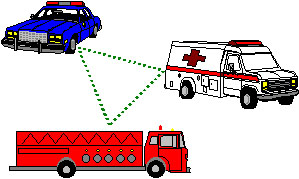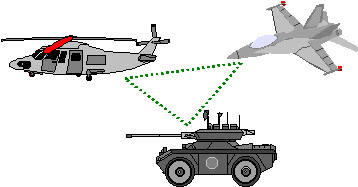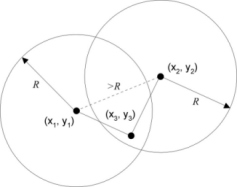

|



 | ||
| Past Work
| ||
| Evaluation and Analysis of Routing Protocols for MANETs in a Military Environment | ||
| We worked closely with other organizations --
DARPA,
SAIC, CECOM,
MITRE, SRI, and
SAINC -- on this project. NIST's role and activities centered around two areas: (1) verification/validation of the
SEAMLSS network modeling and simulation tool developed by the DARPA
Global Mobile Information Systems (GloMo)
Program, and (2) development of methodologies for evaluation of the MANET technologies developed in the
DARPA GloMo programs as well as MANET routing protocols proposed in the Internet
Engineering Task Force (IETF) MANET Working Group
using SEAMLSS and for military scenarios. DARPA
developed SEAMLSS with the goals of providing the capability to test, demonstrate, and evaluate the scalability of GloMo
communications technology for realistic military usage scenarios and to pitch SEAMLSS for possible adoption by the
military community as a tool for modeling and simulating military networks.
| ||
| Verification/Validation of SEAMLSS | ||
| ||
| ||
| ||
| Evaluation of Protocols | ||
| ||
| ||
| MANETs for Emergency Preparedness Telecommunications | ||
| This project focused on investigating possible use of MANETs to meet specific emergency preparedness requirements. Examples of emergency networks include the disaster relief efforts after terrorist bombing attacks or in the aftermath of a natural disaster where cellular/PCS service may not be available. The main focus of the project was on efficient and appropriate use of the bandwidth limited channel in an emergency situation. Of particular importance was emergency channel access and priority messaging for disaster relief workers and teams. We investigated several MAC layer protocols for MANETs, such as FAMA and CAMP protocols, and evaluated their ability to provide multiplexing for different priority classes. We looked at: | ||
| ||
| ||
| Dynamic Power-Conscious Routing for MANETs | ||
| In a MANET, power may be supplied to static nodes through a generator, while mobile
nodes operate off a battery supply. Clearly, a vital issue for MANETs then is to conserve power while still delivering
messages reliably since the life of the network is determined by the power sources. In this project, we focused on the
issue of power conservation in routing for MANETs. Some aspects of the project are listed below:
| ||
| ||
| ||
| ||
| ||
| www.antd.nist.gov
| ||
| Web site owner: The National Institute of Standards and Technology | ||
 |
Disclaimer Notice & Privacy Policy / Security Notice Send comments or suggestions to webmaster@antd.nist.gov The National Institute of Standards and Technology is an Agency of the U.S. Commerce Department Last updated: June 4, 2008 Date Created: May, 2001 |
|